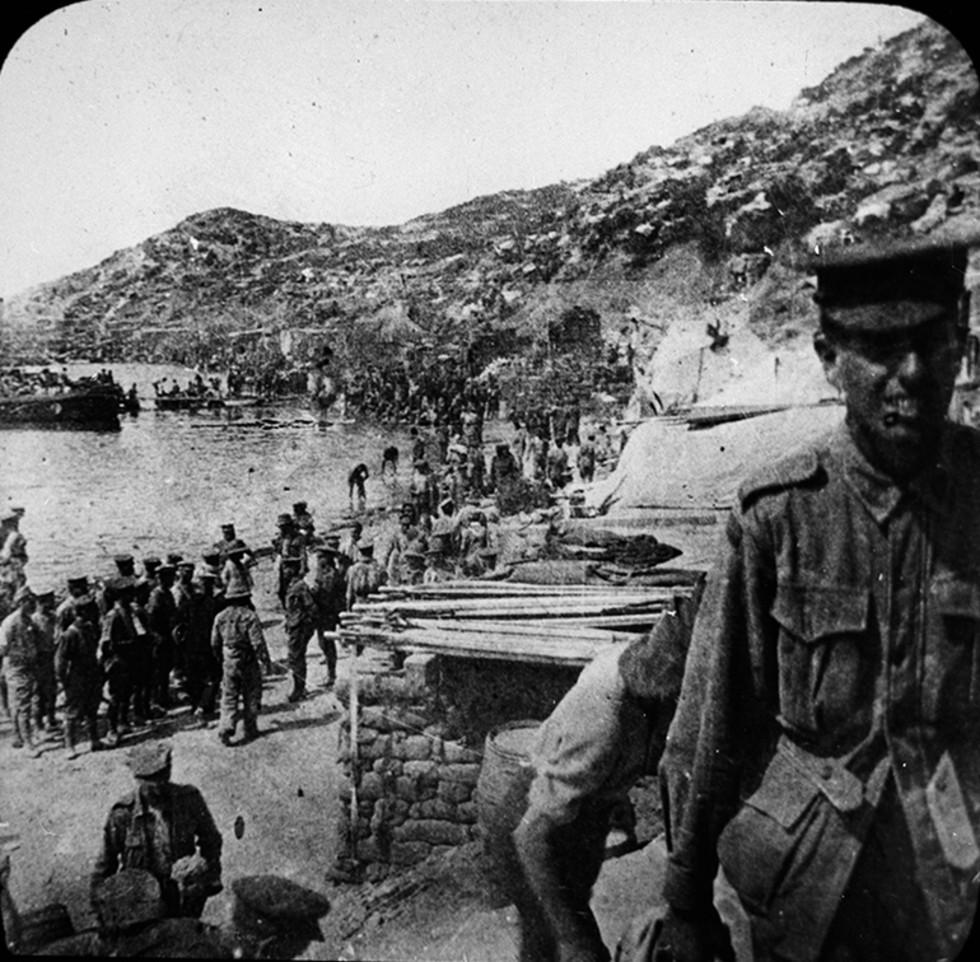


About this record
This photograph shows Australian and New Zealand Army Corps (ANZAC) troops landing at Anzac Cove, Gallipoli, in 1915.
Challenging terrain and basic equipment
When Britain declared war on Germany in August 1914, Australia automatically followed it into war. The Anzacs landed on the Gallipoli peninsula in Turkey on 25 April 1915 as part of the Allied force – which included British, French, Indian, Australian and New Zealand soldiers.
After the Anzacs landed, the steep ridges, deep gullies and thick scrub of the peninsula made it extremely difficult for them to move forward and attack the positions held by the Turkish soldiers. All their ammunition, water and supplies had to be landed on the narrow beach and carried up the steep hills.
The Anzacs faced challenging conditions. Under constant fire from Turkish troops, the soldiers needed to dig trenches and tunnels to protect themselves from enemy attack and to live in. Almost all became sick from diseases spread by the poor sanitation and the flies feeding off the decaying bodies.
The Anzacs – and the Turks – had only basic military equipment at Gallipoli. Their main weapons were a rifle and bayonet, used for hand-to-hand combat. They also made improvised hand grenades, the Anzac version of which were known as ‘jam-tin bombs’.
Need help with your research?
Learn how to interpret primary sources, use our collection and more.

